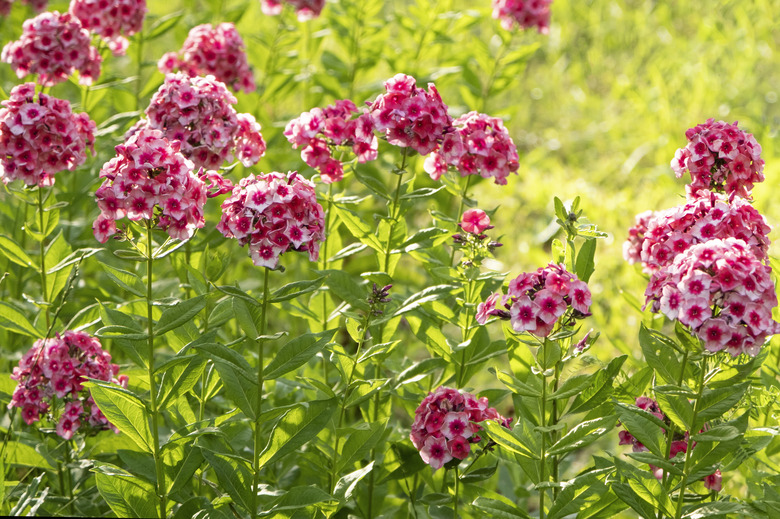When To Trim Phlox After Blooming
Phlox (Phlox spp., USDA plant hardiness zones 3a through 9a) are popular plants with varieties to suit almost every garden. Annual phlox do not need to be cut back in the winter, as they will die off and not grow back. On the other hand, perennial phlox, including both tall and creeping phlox varieties, need to be trimmed.
Creeping phlox should be trimmed back in midsummer, while tall phlox should be cut short to protect it from fungal infections during the winter. All types of phlox should be deadheaded to encourage more blooms and to make the plants look more attractive. Here's what to know about trimming phlox after their blooms have faded.
Should You Deadhead Phlox Flowers?
Should You Deadhead Phlox Flowers?
Phlox flowers do not fall off on their own, so deadheading spent blooms will make your plants look more attractive and may encourage a second flowering. You can choose to cut fresh flowers for bouquets, but phlox are somewhat short-lived and cut flowers will only last a few days when put in a vase.
To deadhead flowers on tall or annual phlox, use clean, sharp pruners to trim off the spent blooms. For creeping phlox, brush away the dead flowers with your hand.
Prune Creeping Phlox
Prune Creeping Phlox
Tall and annual phlox do not require pruning during the growing season, though you should remove damaged or diseased branches as necessary. Creeping phlox should be trimmed once a year to help keep the growth thick and lush, reduce the likelihood of pest infestations, and encourage the greenery to grow in a desired shape.
Pruning should be done after the plant has finished blooming completely, usually between late May and mid-August. Use clean gardening shears to trim each stem by at least a third but never cut more than half of a branch unless it is damaged or diseased.
Winterize Tall Phlox
Winterize Tall Phlox
Creeping phlox is an evergreen that will do just fine in temperatures above minus 40 degrees Fahrenheit, but tall phlox is prone to fungal diseases and does best when protected from winter frosts. Pruning also makes it easier to divide these plants in spring, which can help encourage airflow and reduce fungal infections during the growing season.
When the foliage begins to die after the first strong frost of fall:
- Clean pruner blades with a disinfecting wipe before trimming each phlox plant to avoid spreading fungal infections to other plants.
- Cut back the stems to only 1 to 3 inches tall.
- Cover the
stems with a 3-inch layer of natural mulch.
Do not compost phlox trimmings since they are often infected with powdery mildew. Instead, dispose of discarded foliage in the trash.
